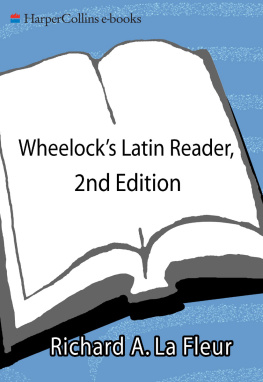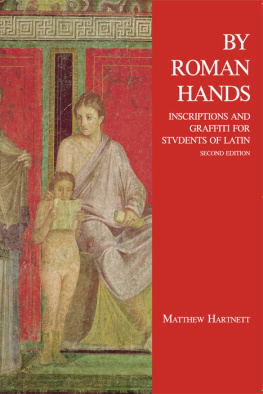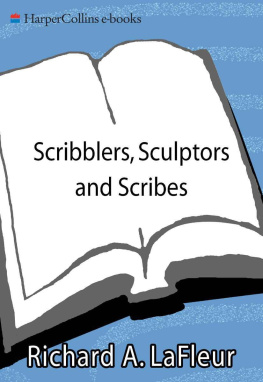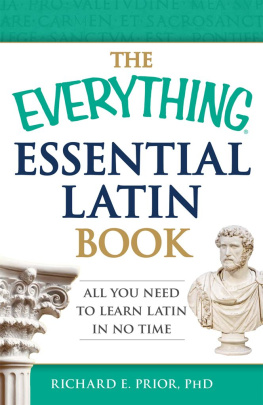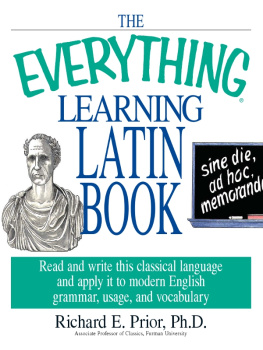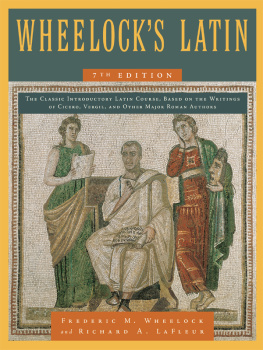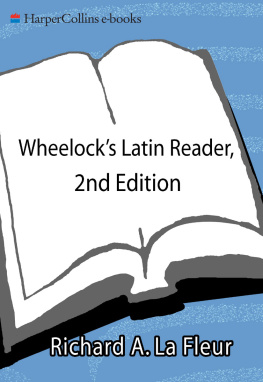D.D.
The genesis of this book derives from the demand for an intermediate Latin reader that could be readily employed as a sequel to Wheelocks Latin and other beginning texts. The volumes purpose is to provide, not a survey of all Latin literature, but an interesting and stimulating selection from a variety of important authors, together with notes that assume and enlarge upon the students knowledge of basic Latin grammar. Students who complete the readings in this text, or a generous sampling of them, will be well prepared to move on to more advanced work in Latin prose and verse; at the same time, those who do not continue with the language can with this book enjoy the rewards of reading selections from some of the most interesting and influential works of Latin literature, ranging from the late republic and the empire to the late Middle Ages, and including Cicero, Livy, Ovid, Pliny the Younger, St. Jeromes translation of the Latin Bible (the so-called Vulgate edition), and a variety of medieval writers.
In deciding upon the passages for this volume, preference was given to including longer selections from fewer authors rather than brief snippets from a wider array of works (the only exception being the sampling from medieval texts presented at the end of the book). Whenever a student comes to a new Latin author, some time is required to become familiar and comfortable with the characteristics of that authors style, and it is easy to imagine the compounding of those challenges in a text that ranges through numerous authors, works, and subjects in a multitude of short passages. Moreover, a very positive advantage in an anthology of longer readings is that each excerpt can provide a better sense of the character of the work as a whole.
All the readings included in this volume, unlike those in some intermediate textbooks, are authentic, unadapted Latin. The only liberty taken with the original texts is the use of classical spelling in the medieval Latin selections and the occasional omission of passages that are either too difficult or digressive or of too little interest. The majority of the passages, including most of Ciceros and Plinys letters and the selections from Ovids Metamorphoses , and the several medieval texts, are in fact unexcerpted, and those that have been excerpted are identified as such and provided with references to the full original text.
In the notes, outright translations are given as seldom as possible. Instead, words that are likely to be unfamiliar are glossed, and comments on grammar and context are provided to help students comprehend the Latin and arrive at an accurate understanding of the text through their own abilities.
Finally, the end vocabulary includes English meanings for all Latin words appearing in the text, the sole exception being certain personal names and other proper nouns that are adequately defined in the notes. Macrons, though not appearing in the text (since the Romans themselves did not ordinarily employ them and they are not used in advanced Latin textbooks), are provided in the vocabulary.
To Professor Edwin S. Ramage of Indiana University I am very grateful for his most conscientious and critical survey of the manuscript of the passages and notes; many of his suggestions have led to improvements. Likewise I am grateful to Professors Joseph J. Prentiss of West Virginia University and W. M. Read of the University of Washington for submitting lists of corrigenda for the books second printing. To the keen observation, good judgment, and acute queries of Dr. Gladys Walterhouse of Barnes and Noble I am also deeply indebted. Finally, my heartfelt and abiding thanks to my very patient and very devoted wife, Dorothy, who typed the manuscript so accurately and so understandingly, and to my daughter Deborah for her very faithful and accurate assistance in proofreading the galleys.
FREDERIC M. WHEELOCK
Amherst, New Hampshire
Summer, 1969
The Revised Edition
In many respects Wheelocks Latin Reader (originally titled Latin Literature: A Book of Readings ) is one of the very best intermediate Latin texts published in the last generation. When the book first appeared in 1967, reviewers extolled the accessibility and comprehensiveness of its readings from Cicero, Livy, Ovid, and Pliny, praised its incorporation of selections from medieval Latin and the Vulgate as a particularly happy innovation, and hailed the volume as a solid companion to Wheelocks Latin , the authors best-selling beginning Latin textbook.
The books primary virtues were, and remain, these two: the wide range of selections from both classical and medieval Latinabout 3,400 lines altogetherand Professor Wheelocks judicious annotations. From Cicero are included a rich and diverse sampling of his widely varied works, constituting nearly half the volumes readings: the extensive excerpts from Ciceros orations against Verres, the corrupt governor of Sicily whom he courageously prosecuted in 70 B.C. , provide valuable insights into the political and judicial proceedings of the late republic and a marvelous specimen of Ciceronian rhetoric; the selections from two of his philosophical treatises, the De Officiis and the De Amicitia , probingly examine ethical and moral issues that continue to be of great concern to us today; and the several letters (most of them included in their entirety), addressed to family, friends, and associates, give us some remarkably candid glimpses into the personal and political life of that most famous orator and statesman.
The selections from Livys Ab Urbe Condita , which include the story of Romulus and Remus and other legends of early Rome, as well as an account of Hannibals assault on Italy during the Second Punic War, are at once invaluable historical documents and lively, captivating narratives. The four transformation tales from Ovids Metamorphoses the tragic love stories of Pyramus and Thisbe, and of Orpheus and Eurydice, the myths of Daedalus and Icarus and of Midas golden touchmake for delightful reading and provide an ideal introduction to classical Latin poetry. The selections from Plinys literary epistles present an interesting contrast with Ciceros more spontaneous letters and contain important and interesting information on social and political institutions of the early empire, as well as detailed evidence for both the catastrophic eruption of Mt. Vesuvius in A.D. 79 and the Roman governments policies regarding practices of the early Christian church during the reign of the emperor Trajan.
The passages from St. Jeromes Vulgate edition of the Bible, including the Ten Commandments, the Sermon on the Mount, the Prodigal Son, and others, are an excellent introduction to that profoundly influential document and to the vulgar Latin (the Latin of the vulgus , the common people) of the early fifth century. And finally, the several selections drawn from Latin literature of the Middle Ages demonstrate the evolution of the language from the eighth to the fourteenth centuries as well as the remarkable diversity of matter and manner seen in such disparate works as Bedes Historia Ecclesiastica Gentis Anglorum , the allegorizing tales of the Gesta Romanorum , the sometimes reverent, sometimes raucous Carmina Burana , and the hypnotic power of that most powerful of medieval hymns, the Dies Irae .
It would be difficult to improve upon so rich a selection from Latin literature, ranging as it does over the prose and verse of some 1,400 years and including ample material from which to pick and choose for a semesters course in college or, if read straight through, for up to two college semesters or a years work in high school. Thus I have made few changes to the content of the reading passages. Here and there I have restored some of the Latin that Professor Wheelock omitted, but only when the level of interest was high and the difficulty low, and often in order to reconstitute a continuous, unexcerpted passage (as, for example, in some of the letters, the Ovid selections, and all the readings from the Vulgate). In a very few instances I have deleted passages that seemed to me inordinately difficult for students at the intermediate level (including the notoriously abstruse preface to Livys history). Perhaps most obviously, the layout of the Latin text has been entirely redesigned and set in a more legible 12-point font.

